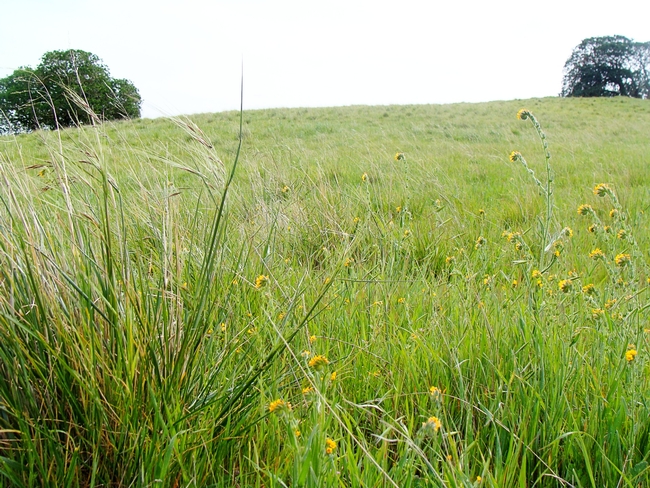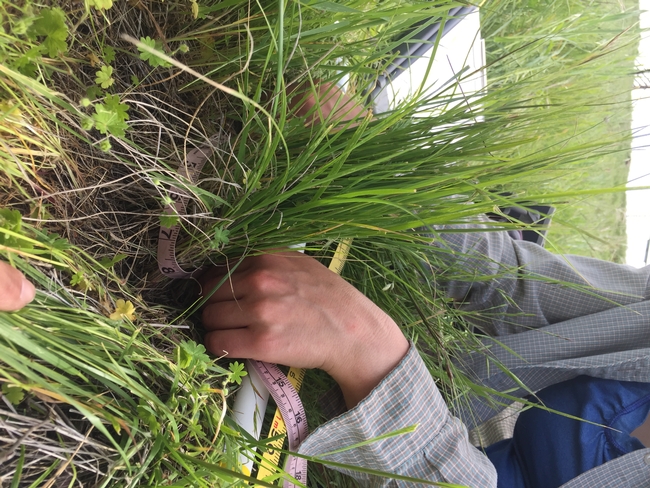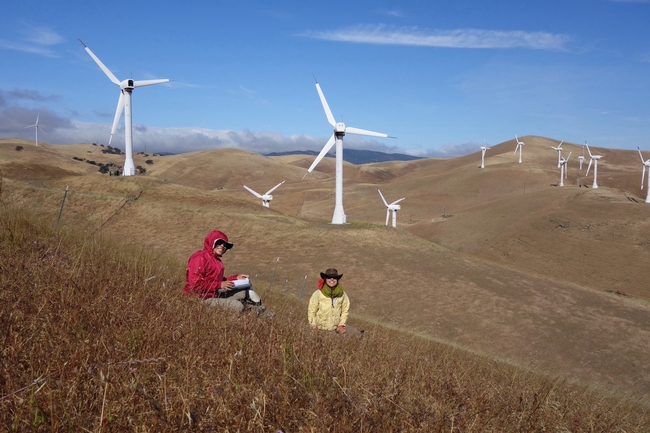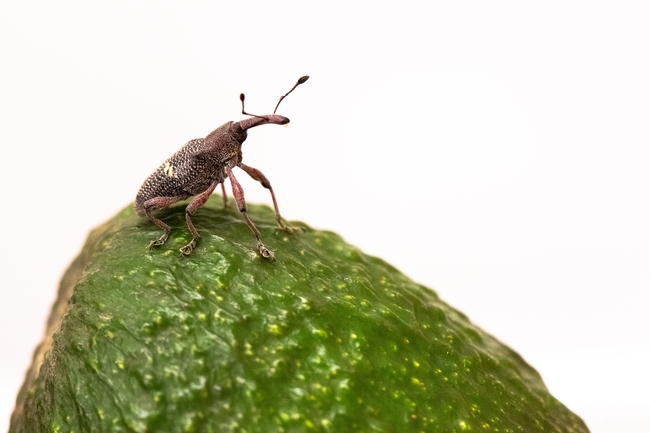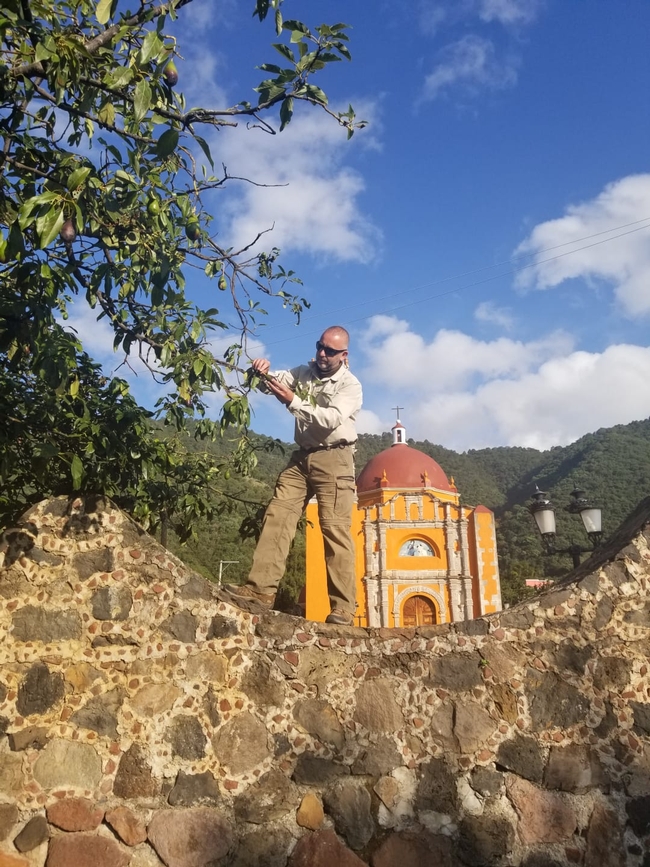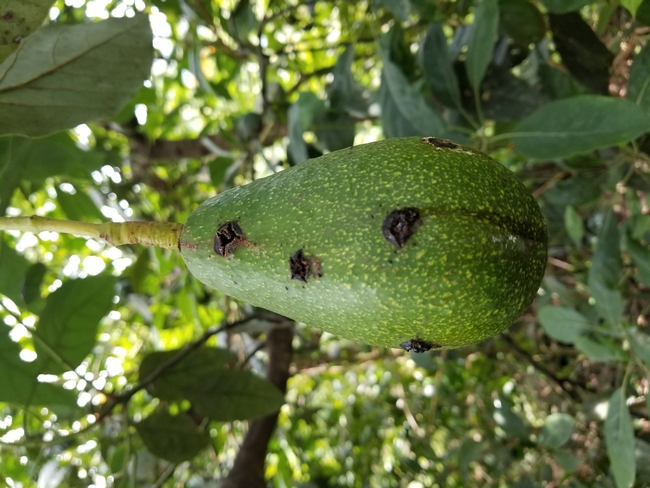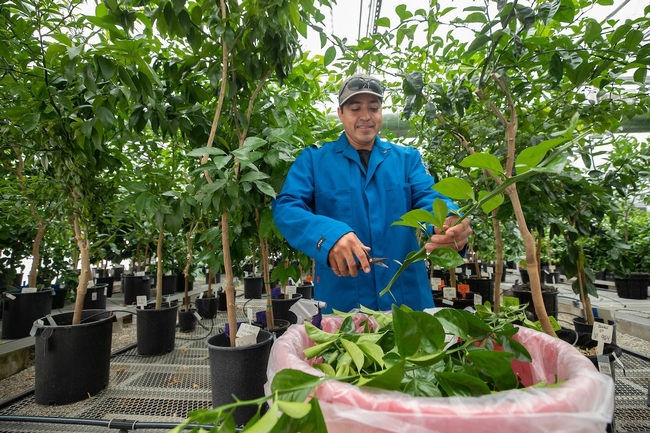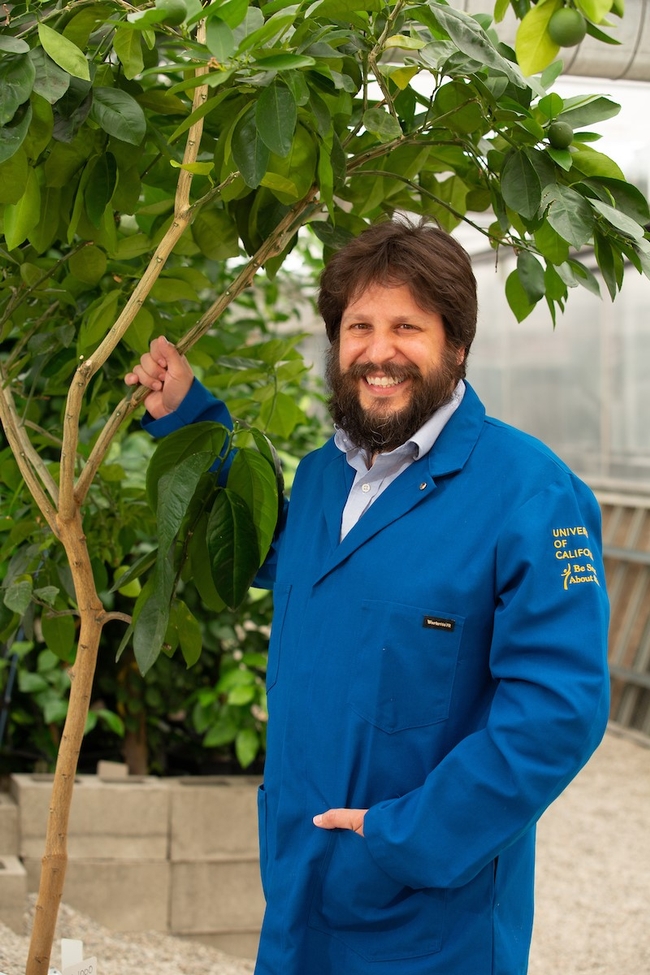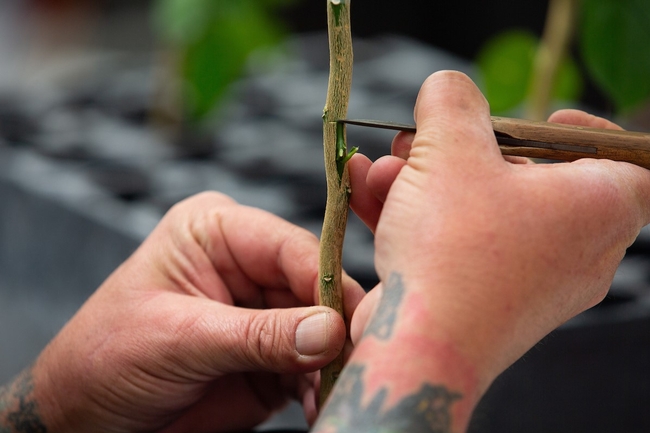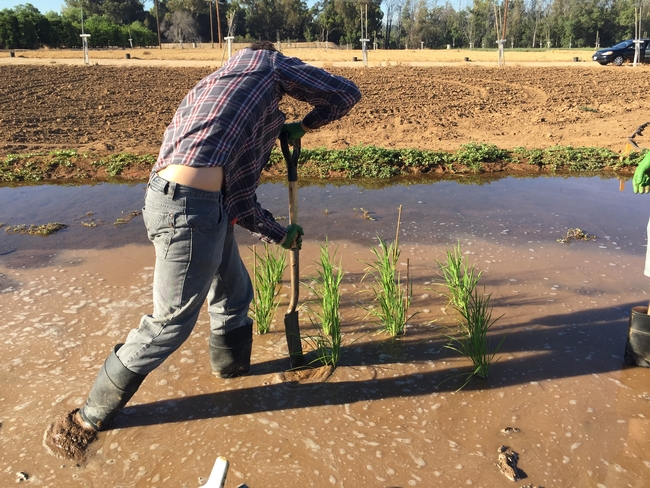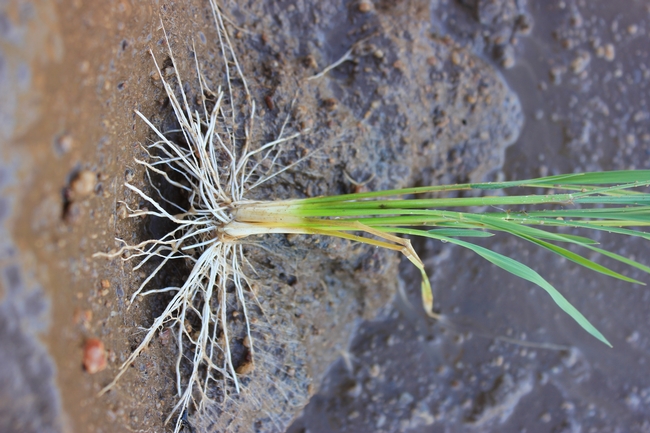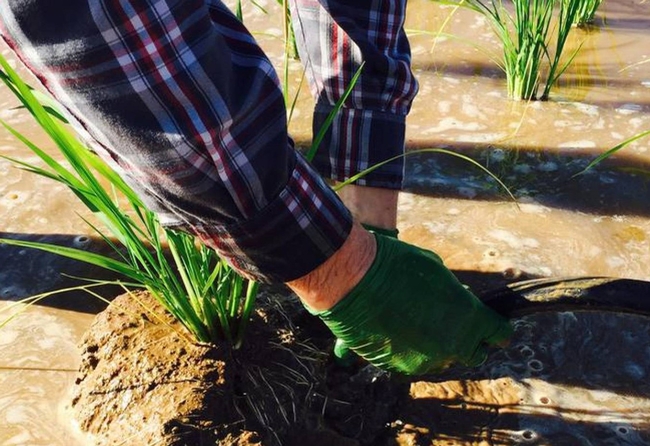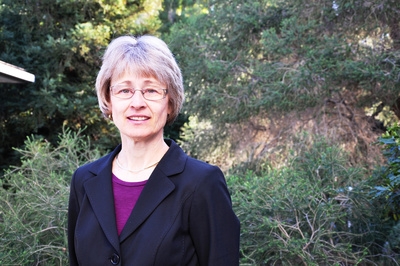Posts Tagged: UCR
The no-tech way to preserve California’s state grass
Disappearing native is like an environmental Swiss Army knife
Though it is disappearing, California's official state grass has the ability to live for 100 years or more. New research demonstrates that sheep and cattle can help it achieve that longevity.
Purple needlegrass once dominated the state's grasslands, serving as food for Native Americans and for more than 330 terrestrial creatures. Today, California has lost most of its grasslands, and the needlegrass occupies only one tenth of what remains.
It is drought resistant, promotes the health of native wildflowers by attracting beneficial root fungi, burns more slowly than non-native grasses and speeds the postfire recovery of burned lands. For these and other reasons, many who work toward habitat restoration hope to preserve the needlegrass.
“Where it grows, these tall, slender bunches become focal points, beautiful as well as environmentally beneficial,” said Loralee Larios, a UC Riverside plant ecologist affiliated with UC Agriculture and Natural Resources. “However, identifying successful management strategies for a species that can live for a couple hundred years is challenging.”
To meet that challenge, Larios teamed up with University of Oregon plant ecologist Lauren Hallett and Northern California's East Bay Regional Park District. They tracked the health of nearly 5,000 individual needlegrass clumps over six years, including an El Niño rain year as well as historic drought.
The researchers took measurements of plant health including growth and seed production. They placed small bags over many of the grass clumps to capture the seeds and quantify the number of seeds they produced.
Their findings, now published in the Journal of Applied Ecology, were that purple needlegrass did better in places where sheep were allowed to graze. The positive effects of the grazing were amplified in times of wetter weather.
Previously, the park district spent a decade trying to assess the success of its grassland maintenance techniques. However, the district's method of applying a strategy like grazing, and then measuring the percentage of needlegrass clumps in a given area resulted in data that didn't follow a discernable pattern from year to year.
“By tracking each plant over time, rather than scanning broadly across an area, we gained much more clarity about how the grass responds to the grazing,” Larios explained. “Perhaps counterintuitively, we saw that the needlegrass generally died back when sheep weren't allowed to graze on it.”
When sheep were removed from the study sites, the needlegrass in all but two of the sites became less healthy. The researchers would like to learn whether the two sites that remained healthy have needlegrasses that are genetically distinct.
Grazing is a controversial strategy for grassland restoration. Some conservationists believe sheep eating the target grass, particularly during already stressful drought years, does not enhance their survival. As far back as the 1800s, some researchers hypothesized that the combination of grazing and drought resulted in the loss of perennial grasses.
Though drought was not beneficial for any of the plants in this study, the researchers believe grazing helped needlegrass survive in at least two ways. One, by trampling on leaf litter and other organic debris, sheep created space for new needlegrass to grow.
“Sometimes you get litter that's as deep as a pencil — so much dead, non-native grass piles up. It's hard for a little seed to get enough light through all of that,” Larios said.
Secondly, sheep eat non-native grasses that generate growth-suppressing debris and compete with purple needlegrass for resources.
When the Spanish colonized California, they brought forage grasses like wild oats that they thought would benefit cattle. Those introduced grasses spread, and now dominate the state's grasslands.
“Our grasslands are known as one of the world's biggest biological invasions,” Larios said.
California has as many as 25 million acres of grasslands, equivalent to the combined areas of Massachusetts, Connecticut, and Rhode Island. Though Larios does not believe it is possible to rid the state of all non-native grasses, she said it is possible to maintain or even increase the amount of purple needlegrass.
“It's great for carbon storage, which mitigates climate change, it doesn't serve as wildfire fuel, and cultivates a space for wildflowers that pollinators are then able to use,” Larios said. “We want to keep all those benefits.”
The scent that could save California’s avocados
Scientists search for pheromone to disrupt insect mating
UC Riverside scientists are on the hunt for a chemical that disrupts “evil” weevils' mating and could prevent them from destroying California's supply of avocados.
Avocado weevils, small beetles with long snouts, drill through fruit to lay eggs. The weevil grubs or larvae bore into avocado seeds to feed, rendering everyone's favorite toast topping inedible.
“They're extremely hard to control because they spend most of their time deep inside the fruit, where they're very well protected from insecticides and natural enemies,” said UCR researcher Mark Hoddle, a UC Cooperative Extension entomology specialist.
Not only are the insects reclusive, they are also understudied, making information about them hard to come by. “All books on avocado pest management will tell you these weevils are bad. They're well recognized, serious pests of avocados, but we know practically nothing about them,” Hoddle said.
One strategy for controlling pests is to introduce other insects that feed on them. However, that is unlikely to work in this case. “Natural enemies of these weevils seem to be extremely rare in areas where this pest is native,” Hoddle said.
To combat avocado weevils in Mexico, an area where they are native, and to prevent them from being accidentally introduced into California, Hoddle is working with Jocelyn Millar, a UCR insect pheromone expert. They are leading an effort to find the weevil's pheromone, with the goal of using it to monitor these pests and prevent them from mating in avocado orchards.
Pheromones are chemicals produced and released into the environment by an insect that can be “smelled” by others of its species, and affect their behavior.
“We could flood avocado orchards with so much pheromone that males and females can't find each other, and therefore can't reproduce,” Hoddle said. “This would reduce damage to fruit and enable growers to use less insecticides.”
Alternative control strategies could include mass trapping, using the pheromone as a lure, or an “attract-and-kill” approach, where the pheromone attracts the weevils to small sources of insecticide.
The work to identify, synthesize and test this pheromone in the field is supported by grants from the California Department of Food and Agriculture, as well as the California Avocado Commission.
An initial phase of the project sent Hoddle to a base of operations three hours south of Mexico City, an area with large weevil populations. Using a special permit issued by the USDA, Hoddle brought weevils back to UCR's Insectary and Quarantine facility.
Hoddle and Sean Halloran, a UCR entomology researcher, captured the chemicals that avocado weevils release into the air. Possible pheromone compound formulas were identified from these crude extracts and are now being synthesized in Millar's laboratory.
“Weevil pheromones have complicated structures. When they're made in a lab, they can have left- or right-handed forms,” said Hoddle. Initially, Millar's group made a mixture of both forms to see if the blend would work as an attractant, as it is far cheaper to make the blend than the individual left- or right-handed forms.
Field work in Mexico with the pheromone cocktail by Hoddle, his wife Christina Hoddle, an associate specialist in entomology, and Mexican collaborators did not get a big response from the weevils, suggesting that one of the forms in the blend could be antagonizing the response to the other.
As the next step, the researchers plan to synthesize the individual forms of the chemicals and test the insects' response to each in Mexican avocado orchards.
Because the levels of avocado imports from Mexico are increasing, the risk of an accidental weevil invasion is rising as well. Hoddle is hopeful that the pheromone will be successfully identified and used to lower the risk this pest presents to California's avocado growers.
“We've been fortunate enough to be awarded these grants, so our work can be implemented in Mexico and benefit California at the same time,” Hoddle said. “The tools we develop now can be used to make sure crops from any exporting country are much safer to import into California.”
You, too, can grow California’s oldest living orange variety
Sweet Mother Orange Tree released from quarantine
The 1000th tree okayed for growing by California's Citrus Clonal Protection Program happens to be the oldest living orange variety in the state.
The program, housed at UC Riverside, is the first of its kind in the world. It began in the 1950s, and its scientists spend up to three years testing and clearing citrus trees of disease so they can be released to commercial and private growers.
By law, every citrus tree newly propagated in California can be traced back to one mother tree created at UCR through the protection program. Program Director Georgios Vidalakis and his group begin their process by testing incoming trees for more than 30 citrus diseases, whether the diseases are known to have emerged in the state or not.
The treatment for any disease identified in that first round of testing is to make a new mini tree from a few cells of the original budwood — short, leafless twigs with buds meant for propagation. “We use special plant cells for this process that diseases cannot penetrate,” Vidalakis said.
After the mini tree grows large enough, program scientists go back and do a second round of testing for disease, making sure they picked the right cells for propagation and eliminating any prior trace of illness.
If it passes the arduous second set of tests, the new tree gets a variety index or VI number that accompanies it for the rest of its life, and it is released to the public.
Dubbed the Mother Orange Tree, Bidwell's Bar is a sweet Mediterranean orange brought to California from Mazatlán, Mexico, and planted in 1856. It was first planted near the Bidwell Bar Bridge near Oroville, then dug up and replanted twice.
Its survival skills are some of the reasons Tom Delfino, former California Citrus Nursery Society director, recommended the old orange tree for the protection program.
“Apparently this variety is very rugged,” Delfino said. “Not only has it survived a lot of cold Northern California winters, but the tree has been dug up and replanted twice — once to protect it from impending flood, and again to make way for the Oroville Dam.”
Much of the state's orange industry is based in areas with warm weather. Delfino, who lives in the San Francisco Bay Area, finds citrus an exciting challenge to grow. By suggesting Bidwell's Bar for approval, he was hoping the protection program would clear it so he could buy its budwood.
On the occasions he has visited the original tree, Delfino said the fruit in reaching distance was always gone. “I think it must be tasty because locals grab it for themselves,” he said. “Makes me even more eager to grow and eat my own. I'm extremely pleased the VI testing is completed so I can acquire it.”
Delfino also hopes that this variety will catch on with commercial growers.
“My thought is our citrus industry is concentrated in the southeastern San Joaquin Valley and is subject to a number of pests that like the warm climate there,” Delfino said. “Though this has seeds, which may be a deterrent, it can be grown in colder areas that discourage some of those insects.”
The tree arrived in California nearly two decades before the better-known Washington Navel orange grown by Eliza Tibbets in Riverside. The navel is named for a structure at the bottom end of the fruit, which resembles a belly button. This structure is actually a separate fruit inside the larger fruit. The Washington Navel is also seedless, contributing to its popularity.
“Bidwell's Bar is an example of what was grown in California before the Washington Navel came to dominate, and now that it has a VI number, others can grow it too,” said Tracy Kahn, curator of the Givaudan Citrus Variety Collection at UCR.
Kahn says it's important to preserve the genetic material from a tree with such significance to California. “Some people were worried it was going to die, but now we have an officially cleared source of this historic tree, and it is protected for future generations,” Kahn said.
New strategies to save the world’s most indispensable grain
Genetic insights help rice survive drought and flood
Plants — they're just like us, with unique techniques for handling stress. To save one of the most important crops on Earth from extreme climate swings, scientists are mapping out plants' own stress-busting strategies.
A UC Riverside-led team has learned what happens to the roots of rice plants when they're confronted with two types of stressful scenarios: too much water, or too little. These observations form the basis of new protective strategies.
“This one crop is the major source of calories for upwards of 45 percent of humanity, but its harvests are in danger,” said Julia Bailey-Serres, UCR geneticist and study lead. “In the U.S., floods rival droughts in terms of damage to farmers' crops each year.”
While it is possible for rice to flourish in flooded soils, the plants yield less food or even die if the water is too deep for too long. This work simulated prolonged floods of five days or longer, in which plants were completely submerged. It also simulated drought conditions.
In particular, the researchers examined the roots' response to both types of conditions, because roots are the unseen first responders to flood and drought-related stress.
Their work is described in a new paper published in the journal Developmental Cell.
One key finding is about a cork-like substance, suberin, that's produced by rice roots in response to stress. It helps protect from floods as well as from drought.
“Suberin is a lipid molecule that helps any water drawn up by the roots make it to the shoots, and helps oxygen from shoots to reach roots,” Bailey-Serres said. “If we reinforce the plant's ability to create suberin, rice has better chances for survival in all kinds of weather.”
The researchers were able to identify a network of genes that control suberin production and can use this information for gene editing or selective breeding.
“Understanding suberin is particularly exciting because it is not susceptible to breakdown by soil microbes, so carbon that the plant puts into suberin molecules in the roots is trapped in the ground,” said Alex Borowsky, UCR computational biologist and study co-author.
The researchers also identified the genes controlling some of rice's other stress behaviors.
“One of our interesting findings is that when rice plants are submerged in water, the root cell growth cycle goes on pause, then switches back on shortly after the shoots have access to air,” Bailey-Serres said.
In the future, the research team plans to test how modifying these stress responses can make the plant more resilient to both wet and dry conditions.
“Now that we understand these responses, we have a roadmap to make targeted changes to the rice genome that will result in a more stress-tolerant plant,” Bailey-Serres said.
Though heavy rains and droughts are both increasing as threats, Bailey-Serres has hope that new genetic technology can increase its resilience before it's too late.
“With genome editing, the fact that we can make a tiny but targeted change and protect a plant from disease is amazing. Though our crops are threatened, new technologies give us reasons to hope,” Bailey-Serres said.
Yates named CNAS dean
Marylynn V. Yates, a professor of environmental microbiology at the University of California, Riverside, has been appointed the dean of UC Riverside’s College of Natural and Agricultural Sciences (CNAS), effective Jan. 1, 2012. She succeeds Thomas O. Baldwin, who led the college for the past three and a half years.
Yates joined the faculty of UC Riverside in 1987, and has served in several leadership roles during her tenure at the university. These include chair of the Department of Environmental Sciences; associate executive vice chancellor; chair of the CNAS Executive Committee; co-chair of the Committee on Academic Personnel; program leader for University of California Division of Agriculture and Natural Resources; associate co-director of the One Health Center, University of California Global Health Institute (UCGHI); and UCGHI’s co-director of education.
“CNAS has outstanding faculty, dedicated staff, and excellent students,” Yates said. “Over the coming months, we all will be working together to redesign our college. Our goal is to better enable faculty to conduct cutting edge research, to foster interdisciplinary collaborations necessary to tackle the most difficult problems facing society, and to create an environment that will allow us to continue to attract the brightest students and the best new faculty.”
Yates’s research focuses on the transmission of human pathogenic microorganisms in environmental media, particularly water and wastewater. She serves on several advisory committees, panels and boards for water quality, including the U.S. Environmental Protection Agency’s Science Advisory Board Drinking Water Committee and the National Research Council’s Water Science & Technology Board. Currently, she serves as editor for Applied & Environmental Microbiology.
A fellow of the American Association for the Advancement of Science (2007) and a fellow of the American Academy of Microbiology (2011), she is a recipient of UCR’s Distinguished Teaching Award (2001-02) and was named Distinguished Teaching Professor (2006).
Yates received her doctoral degree in microbiology from the University of Arizona, Tucson, in 1984. She has a master’s degree in chemistry from New Mexico Institute of Mining and Technology and a bachelor’s degree in nursing from the University of Wisconsin, Madison.
During his tenure as dean of CNAS, Baldwin, a biochemist, helped expand the college’s profile externally and promoted the cause of science education. He launched a highly successful Science and Society lecture series, created the Science Circle, penned opinion pieces, and established the Science Ambassador program. Baldwin reached out to community leaders, educators, and industry for purposes of fundraising, science education, and developing partnerships. He will continue to perform some of these outreach activities as the college’s executive associate dean for external relations.

